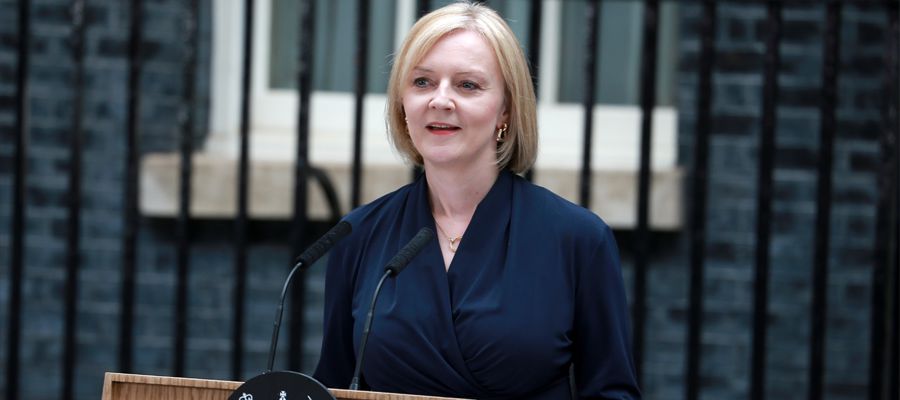At the heart is the differing priorities of government and the BoE.
- Thursday, October 13, 2022
 This past two weeks has been quite monumental in UK politics and finance. Prime Minister Liz Truss launched a policy to cap the cost of energy for households and business and a vital relief for millions that faced hardship over spiralling gas prices.
This past two weeks has been quite monumental in UK politics and finance. Prime Minister Liz Truss launched a policy to cap the cost of energy for households and business and a vital relief for millions that faced hardship over spiralling gas prices.
This very well received and generous policy was followed by the new Chancellor Kwasi Kwarteng’s mini budget aimed at creating a growth culture for the UK and an attractive place to invest.
Mr Kwarteng reversed the 2.5% NIC increase and the planned corporation tax increases from 19% to 25% in a plan to cut the levels of taxation on employment and companies. The cap on bonuses and green levies on household energy bills were also scrapped. The ban on fracking was lifted along with support for more drilling in the North Sea in order to improve the UK energy supply.
No one can ignore the fact that the UK is a high spending and now high debt economy with rising inflation and interest rates and is facing a recession. This is not a great place to start a new premiership from, so a focus on growth is relevant. However, the way in which the mini budget was delivered meant markets took it badly.
The surprise part of the budget was the unfunded tax cut for highest rates of tax. And the bringing forward of the 1% reduction in basic rate by one year. These measures were calculated to lose £45bn in revenue but analysts suggest could result in £100bn in growth. These tax reductions costs spooked the markets as they sat on top of the £150bn cost of the energy cap proposals.
Sterling took the early stress by falling from US$1.14 to US$1.03. Sterling lost 9% in value and government borrowing cost rose on a 10-year gilt from 3.7% to 4.5% and hence pushed gilt prices down.
Long term gilts issued for the pensions industry saw their yields rise even further to 5.1%. This in turn impacted pension funds that used liability driven investment strategies. The daily margin calls on these strategies meant pension funds had hours to sell gilts to raise cash to meet their collateral requirements. These additional sell offs pushed the price of gilts down further.
The Bank of England had to intervene as lender of last resort in order to restore calm to the gilt markets. The BoE delayed its quantitative tightening programme to buy up £5bn of long dated bonds each day for up to 13 days. With the gilt markets stabilising, the BoE only ended up spending £3.7bn of a potential £65bn and if these purchased gilts are sold back to the market in an orderly way the underpinning will cost nothing.
The overall impact was that the global demand for UK long dated gilts fell sharply. Gilt prices fell and yield soared. One consequence was that the mortgage market was impacted with new fixed rate mortgages being either repriced or withdrawn. The variable rate of interest for mortgages is rising as BoE base rates have increased and are expected to do so further.
Higher mortgage and borrowing costs will not be helpful to consumer spending and business growth which is what Liz Truss is aiming for.
A concern for foreign investors is that the UK has a 95% national debt to annual GDP ratio and the government is proposing to borrow on gilt markets an extra £150bn to cover the gas price cap and a further £45bn to fund the gap in government income from the tax cut proposals. These moves were taken badly by international investors.
Two weeks on and the market reaction looks overdone. All currencies are weakening against the US$ as the Fed pushes ahead with interest rate rises. Sterling has now recovered to US$1.11 and the 30-year gilt yields are back down to 4.2%. Despite this swift rebound the loss of faith in the UK was real and rating agencies like Moody’s, Fitch and Standard and Poors will review the UK credit rating.
The BoE are likely to rise interest rates by 1% from 2.25% to 3.25% at the next Monetary Committee meeting on 3rd November to keep on top of inflation which is currently 9.9%.
The cost of the £150bn energy cap policy on top of the national debt built up from the generous furlough scheme and controversial track and trace policy means that UK national debt to annual GDP has grown significantly over the past 3 years. National debt has risen from 83% to 96% of GDP over that period. However, within the G7 nations the UK debt to GDP is relatively low.
The servicing costs of our growing national debt is impacted by interest rates and inflation. For every 1% rise in UK base rates then an additional £20bn in annual interest cost is added. The forecast for UK interest rates is for them to peak at 5.25% in Q1 2023 and then steadily fall back to around 4% by 2026 as inflation declines.
At the heart of this is the differing priorities of government and the BoE. The Bank want to tighten money to control inflation and the government wanting growth. These positions are opposite and therefore there is tension between the new cabinet, the Treasury and the Bank.

Chris Davies
Chartered Financial AdviserChris is a Chartered Independent Financial Adviser and leads the investment team.
About Estate Capital
Financial Services
Our Contacts
7 Uplands Crescent,
Swansea, South Wales,
SA2 0PA.
Tel: 01792 477763
